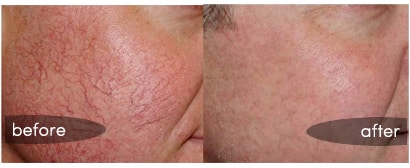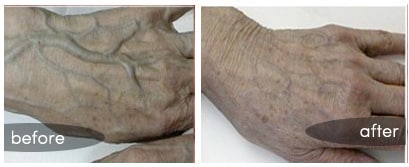
The network of veins and arteries found throughout the human body plays an essential role in an individual’s health. When things go wrong with veins, it’s very likely that symptoms quickly follow that require medical attention. This is often due to the fact that veins affect so many primary systems within the body including cardiovascular functions. Veins and arteries must work in perfect tandem to carry blood back and forth between extremities and the heart. Where arteries carry oxygen-rich blood away from the heart, veins are charged with returning oxygen-depleted blood from the rest of the body back to the heart for restoration and recirculation.
While both functions are vital, veins face an extra obstacle thanks to the force of gravity making it a bit more difficult to get blood to flow upwards back towards the heart. To help in this process, veins are outfitted with a collection of important one-way valves. These valves push blood up and back in the right direction, however, it doesn’t take long for problems to arise when one or more of these valves isn’t working properly. Flowing opposite of the heart, blood can quickly begin to pool in the extremities causing a pressure buildup, swelling, and potentially, the development of varicose veins.
While facial varicose veins often present with their own set of painful symptoms that just might range from swelling to discoloration, they are also linked to the development of smaller protrusions known as spider veins. As blood looks for more efficient routes away from varicose veins, they often web off towards the surface of the skin into what is referred to as spider veins. These may present in hues of red, purple, or blue and can be found across the legs, arms, face, or even hands. In addition to being linked to the development of facial varicose veins, spider veins are thought to be connected to genetics, age, weight changes, hormonal fluctuations, or even excessive exposure to the sun.
Clinical Treatment Options for Hand & Facial Veins
Whatever the cause behind the development of spider or varicose veins may be, they are often a nuisance to individuals looking to attain smoother, younger, and more radiant-looking skin. The appearance of veins at the surface of the skin can be particularly difficult for those that suffer from their development across the face or spider veins on hands. While facial veins can feel invasive and highly visible, those with veins infiltrating the hands may feel that the aesthetic ages them beyond their actual years. Fortunately, both scenarios do not simply have to be lived with.
Instead, incredible advancements in cosmetic technology mean that those looking to reduce and eliminate problematic veins across the face and hands can now do so more easily than ever before. Replacing painful vein stripping is a collection of minimally invasive outpatient procedures that are not only highly effective but come with a great safety record and are associated with a rapid recovery time.
Facial Spider Veins Treatment Options
For patients that notice the development of veins around the eyes, across the nose and cheeks, or along the jawline, cosmetic physicians are likely to recommend VeinWave as a treatment option for facial spider veins. This minimally-invasive technique utilizes painless thermocoagulation technology to close and collapse spider veins at the surface of the skin so that they are ultimately reabsorbed safely back into the body. The incision used to access spider veins using VeinWave is so minimal that local anesthetic is not required to maintain patient comfort standards. Once the treatment site is clearly identified, the attending physician will insert a small insulated needle underneath the skin and use targeted heat to collapse the facial veins at the source. While it may take a few treatment sessions to successfully rid a patient of the spider vein webbing that’s being targeted, each session generally takes no more than 15 minutes to complete. In addition to facial veins, VeinWave is also a popular option for treating spider veins along the ankles and other areas where veins are too small for more intense procedures.
While it may take a few treatment sessions to successfully rid a patient of the spider vein webbing that’s being targeted, each session generally takes no more than 15 minutes to complete. In addition to facial veins, VeinWave is also a popular option for treating spider veins along the ankles and other areas where veins are too small for more intense procedures.
Sclerotherapy for Facial Spider Veins
When it comes to treating larger spider veins on hands or varicose veins on the hands, many cosmetic physicians turn to Sclerotherapy as a solution. This minimally invasive technique begins with applying a local anesthetic for added comfort. Once the area is numb, the physician will inject a foam or liquid sclerosant directly into the problematic veins. The solution irritates the veins to the point of collapse and much like with VeinWave, the veins are eventually reabsorbed safely back into the body. While liquid sclerosant is highly successful, more physicians are recommending foam as an option. Foam tends to stick more prominently to the interior of the vein, quickly collapsing it and avoiding any leakage into the bloodstream. Hand vein sclerotherapy is a very popular procedure at our office. Call our office to learn more about the hand vein sclerotherapy procedure.
Contact Our Clinic Today
Whether you’re struggling with veins across your hands or seeing facial vein treatment or even looking to establish long-term vein health care, Dr. Wright and his team at the St. Louis Laser Vein Center are here to help. Contact us today to learn more about our many services or to schedule your appointment!


